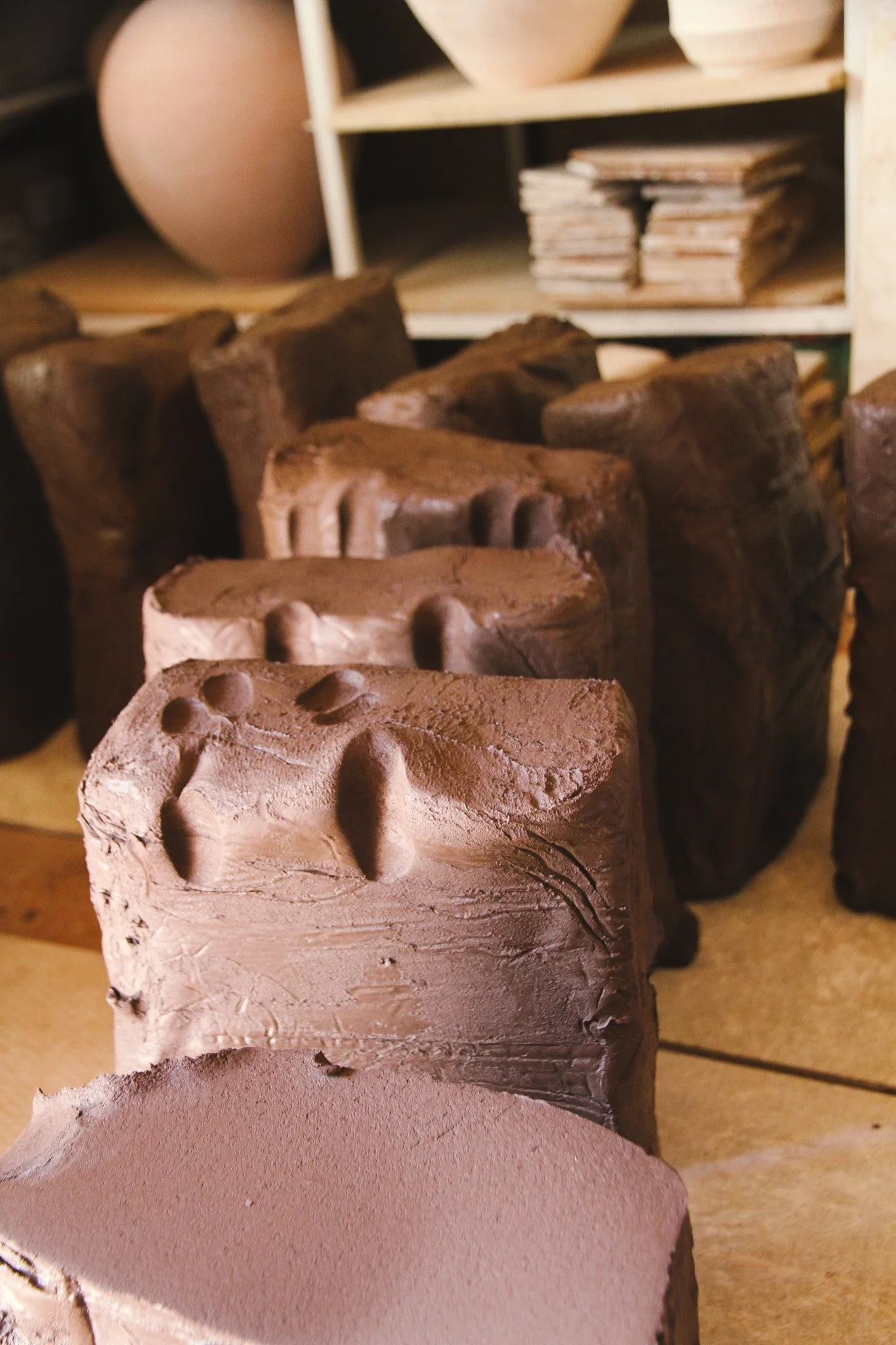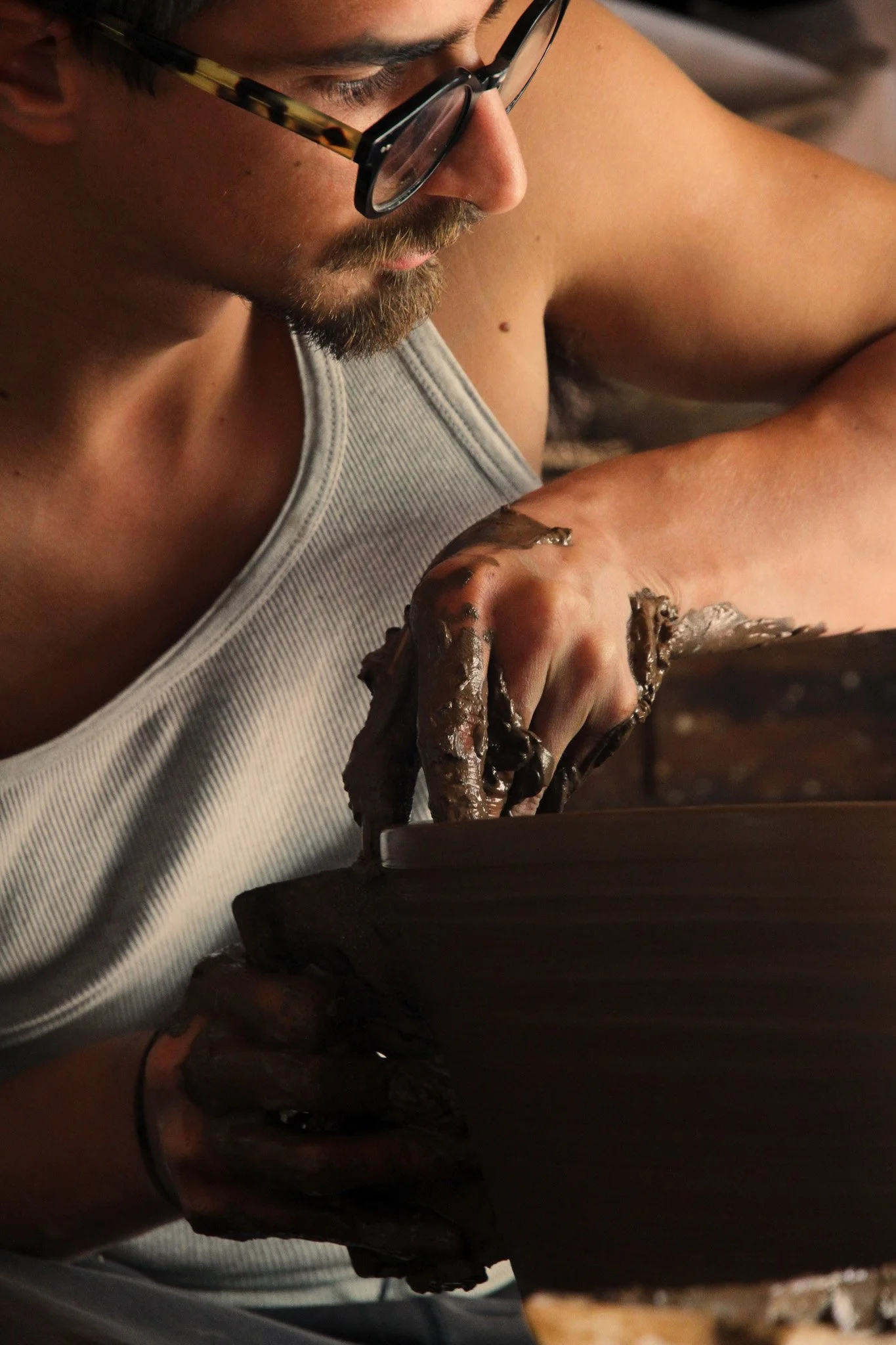Clay. Clay. Clay!
CLAY
Clay is one of the most accessible of the materials we work with .
Kids play with it. Adults use it in therapy. Hell, you can dig it out of many soils and use it as it is, all you need is creativity (and some heat if you want to fire it).
But to work with it, is another story!
Clay is very heavy. It dries the skin out and stains everything it touches. It cracks if heated too fast, it deforms if heated unevenly. And let me not even start with glazes, the powdered glass used to colour and lustre the surface of the ceramic.
Our TSV collection is made from black earthenware clay with a porous surface.
This means the material is low firing, starting off as a chocolate brown which burns into a deep black. The clay is flecked with chamotte, this is a ground raw material from already fired clay which is introduced to the fresh clay to give it more stable properties and a rougher surface aesthetic. It is also very rough on the hands of the maker, like sandpaper in the satin clay, it wears away at the skin of the hands shaping it.
Throwing
Throwing is the art of shaping clay on a spinning wheel. Using the force of the spinning base the mass is moved into a circular form by touch. It is pulled and pushed, shaped until it finally surrenders all its molecules into a circular order.
For our large pots, up to 10kg of clay is hoisted and moved on a wheel. Some of that material is later removed and some weight evaporates in the heat of the kiln.
For our purposes, clay needs to be worked extremely precisely in repetition. The bowls we commission have an accurately shaped lip onto which the glass can locate. In addition to this the shape of the bowl has to match the silhouette of the glass.
In the making, precision is key. The clay is measured when wet: the shape has to be accurately 10% bigger then when finished to account for the shrinkage in the firing. Also, the roundness of the shape has to be preserved, at all times! Clay has a memory, if it is lifted and pushed, the molecules will remember this and transform back in the heat of the kiln.
PROFILE WORK
A simple profile locates the pieces of a Stacking Vessel together. Ceramic is a perfect material to accommodate this profile, as it is durable and can take a lot of weight.
Key is shaping the profile in the right size, and making it very smooth, so that the glass won't scratch on it.
Attention to detail in all stages of the making, and making it look effortless shows the true craftsmanship behind!



